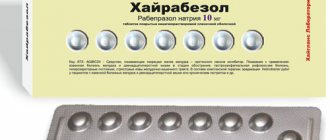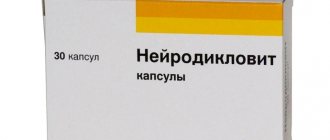Indications for use and contraindications for treatment with Heptral
The instructions for the drug contain basic recommendations for prescribing Heptral:
- cirrhosis of the liver;
- fatty liver hepatosis, chronic hepatitis;
- inflammation of the bile duct, VHD during pregnancy;
- liver intoxication – due to taking medications, alcoholism, viral infections;
- encephalopathy – pi associations with insufficient functionality of the organ.
Heptral is incompatible with alcoholic beverages. To obtain the expected effects of therapy, the patient must follow a strict diet and avoid products containing ethanol. During pregnancy, the medicine is prescribed in exceptional cases when the benefit to the mother outweighs the risk to the fetus.
Heptral is contraindicated in a number of genetic disorders that provoke:
- an increase in the volume of homocysteine contained in the blood;
- violation of methionine metabolism;
- affecting the S-adenosylmethionine cycle.
In other cases, the prohibition on use is individual intolerance to the component composition and minor age.
Particular care during therapy is required for patients with bipolar affective disorders, during breastfeeding and in the first 13 weeks of gestation. In the last trimester of pregnancy, no harmful effects on the body of the mother and child were recorded when using the medication.
Heptral®
Ademetionine belongs to the group of hepatoprotectors and also has antidepressant activity.
It has choleretic and cholekinetic effects, has detoxification, regenerating, antioxidant, antifibrosing and neuroprotective properties.
Replenishes the deficiency of S-adenosyl-L-methionine (ademetionine) and stimulates its production in the body; it is found in all environments of the body. The highest concentration of ademetionine was observed in the liver and brain.
Plays a key role in the metabolic processes of the body, takes part in important biochemical reactions: transmethylation, transsulfurization, transamination. In transmethylation reactions, ademetionine donates a methyl group for the synthesis of cell membrane phospholipids, neurotransmitters, nucleic acids, proteins, hormones, etc. In transsulfuration reactions, ademetionine is a precursor of cysteine, taurine, glutathione (providing a redox mechanism of cellular detoxification), coenzyme A (included in biochemical reactions of the tricarboxylic acid cycle and replenishes the energy potential of the cell).
Increases the content of glutamine in the liver, cysteine and taurine in plasma; reduces the content of methionine in serum, normalizing metabolic reactions in the liver. After decarboxylation, it participates in aminopropylation reactions as a precursor of the polyamines putrescine (stimulator of cell regeneration and hepatocyte proliferation), spermidine and spermine, which are part of the ribosome structure, which reduces the risk of fibrosis.
Has a choleretic effect.
Ademetionine normalizes the synthesis of endogenous phosphatidylcholine in hepatocytes, which increases membrane fluidity and polarization. This improves the function of bile acid transport systems associated with hepatocyte membranes and promotes the passage of bile acids into the biliary tract. Effective for intralobular cholestasis (impaired synthesis and flow of bile). Ademetionine reduces the toxicity of bile acids in hepatocytes by conjugating and sulfating them. Conjugation with taurine increases the solubility of bile acids and their removal from the hepatocyte. The process of sulfation of bile acids facilitates their elimination by the kidneys, facilitates their passage through the hepatocyte membrane and excretion in the bile. In addition, sulfated bile acids themselves additionally protect liver cell membranes from the toxic effects of non-sulfated bile acids (present in high concentrations in hepatocytes during intrahepatic cholestasis).
In patients with diffuse liver diseases (cirrhosis, hepatitis) with intrahepatic cholestasis syndrome, ademetionine reduces the severity of skin itching and changes in biochemical parameters, incl. concentration of direct bilirubin, activity of alkaline phosphatase, aminotransferases, etc.
The choleretic and hepatoprotective effect lasts up to 3 months after cessation of treatment.
It has been shown to be effective against hepatopathy caused by various hepatotoxic drugs.
Antidepressant activity appears gradually, starting from the end of the first week of treatment, and stabilizes within 2 weeks of treatment.
A number of studies have confirmed the effectiveness of ademetionine in the treatment of fatigue in patients with chronic liver diseases. A pooled analysis of data obtained in patients with symptoms of increased fatigue before treatment showed the effect of treatment with ademetionine in reducing symptoms of increased fatigue in combination with a number of other symptoms, such as depression, icterus of the skin and mucous membranes, malaise and itching.
Treatment with ademetionine significantly improved mood in patients with alcoholic liver disease, who simultaneously achieved a positive response to symptoms of increased fatigue. In addition, in patients with alcoholic liver disease and non-alcoholic fatty liver disease who achieved a response to treatment with ademetionine in terms of symptoms of increased fatigue, there was also a significant reduction in symptoms such as icterus of the skin and mucous membranes, malaise and itching.
Adverse reactions
The abstract indicates the main non-standard reactions to medical manipulations in the form of painful sensations in the abdomen, attacks of nausea and diarrhea. The use of tablets or solution can become a source of:
- individual intolerance to the component composition, swelling of the laryngeal tissues;
- dermatological rash, obsessive itching, Quincke's edema;
- increased work of sweat glands;
- infectious lesions of the urinary tract;
- sleep disorders with insomnia, attacks of cephalalgia;
- confusion, unreasonable anxiety;
- dizziness, sensitivity disorders;
- problems with the functionality of the cardiovascular department, inflammatory processes in the venous walls, hot flushes;
- increased dryness of the mucous membranes in the oral cavity, bloating and active gas formation;
- dyspeptic disorders with diarrhea;
- attacks of nausea with vomiting, spontaneous bleeding from the gastrointestinal tract;
- functional disorders of the digestive system;
- liver colic, cirrhosis, muscle spasms, joint pain.
The drug can provoke febrile and flu-like conditions, chills, swelling of peripheral tissues, asthenia.
Dosages and therapy when using Heptral
The tablets are consumed in the first half, without crushing or chewing. The standard daily dosage is 400 ml or 2-4 tablets. The duration of treatment depends on the complexity of the pathological process.
The medication in ampoules is administered intravenously or intramuscularly; injections into a vein are performed at a slow pace. Heptral solution is prepared before manipulation; the solvent included in the package is used for dilution. Residues of the drug must be disposed of. Ready-made solutions must not be combined with alkaline bases and preparations based on calcium ions.
Therapy depends on the type of disease:
- VPH – from 1 to 2 ampoules per day, duration of treatment does not exceed two weeks;
- depressive states - from 400 to 800 mg, with a duration of 2-3 weeks.
While maintenance therapy is continued, the patient is prescribed Heptral tablets, from 2 to 4 pieces for 0.5-1 month.
Studies have not shown cases of overdose with oral or liquid forms of the drug.
Heptral, 20 pcs., 400 mg, enteric-coated tablets
Ademetionine belongs to the group of hepatoprotectors and also has antidepressant activity. It has choleretic and cholekinetic effects, has detoxification, regenerating, antioxidant, antifibrosing and neuroprotective properties. Replenishes the deficiency of S-adenosyl-L-methionine (ademetionine) and stimulates its production in the body; it is found in all environments of the body. The highest concentration of ademetionine was observed in the liver and brain.
Plays a key role in the metabolic processes of the body, takes part in important biochemical reactions: transmethylation, transsulfation, transamination.
In transmethylation reactions, ademetionine donates a methyl group for the synthesis of cell membrane phospholipids, neurotransmitters, nucleic acids, proteins, hormones, etc. In transsulfation reactions, ademetionine is a precursor of cysteine, taurine, glutathione (providing a redox mechanism for cellular detoxification), acetylation coenzyme (included in biochemical reactions of the tricarboxylic acid cycle and replenishes the energy potential of the cell).
Increases the content of glutamine in the liver, cysteine and taurine in plasma; reduces the content of methionine in serum, normalizing metabolic reactions in the liver. After decarboxylation, it participates in aminopropylation reactions as a precursor of polyamines - putrescine (stimulator of cell regeneration and hepatocyte proliferation), spermidine and spermine, which are part of the ribosome structure, which reduces the risk of fibrosis. Has a choleretic effect.
Ademetionine normalizes the synthesis of endogenous phosphatidylcholine in hepatocytes, which increases membrane fluidity and polarization. This improves the function of bile acid transport systems associated with hepatocyte membranes and promotes the passage of bile acids into the biliary system. Effective for intrahepatic (intralobular and interlobular) variants of cholestasis (impaired synthesis and flow of bile). Ademetionine reduces the toxicity of bile acids in hepatocytes by conjugating and sulfating them. Conjugation with taurine increases the solubility of bile acids and their removal from the hepatocyte. The process of sulfation of bile acids facilitates their elimination by the kidneys, facilitates their passage through the hepatocyte membrane and excretion in the bile. In addition, sulfated bile acids themselves additionally protect liver cell membranes from the toxic effects of non-sulfated bile acids (present in high concentrations in hepatocytes during intrahepatic cholestasis).
In patients with diffuse liver diseases (cirrhosis, hepatitis) with intrahepatic cholestasis syndrome, ademetionine reduces the severity of skin itching and changes in biochemical parameters, incl. level of direct bilirubin, alkaline phosphatase activity, aminotransferases, etc. The choleretic and hepatoprotective effect lasts up to 3 months after cessation of treatment.
It has been shown to be effective against hepatopathies caused by various hepatotoxic drugs. Prescription to patients with opioid addiction accompanied by liver damage leads to regression of clinical manifestations of withdrawal, improvement of the functional state of the liver and microsomal oxidation processes.
Antidepressant activity appears gradually, starting from the end of the first week of treatment, and stabilizes within 2 weeks of treatment. Effective for recurrent endogenous and neurotic depressions resistant to amitriptyline. Has the ability to interrupt relapses of depression.
Prescription for osteoarthritis reduces the severity of pain, increases the synthesis of proteoglycans and leads to partial regeneration of cartilage tissue.





